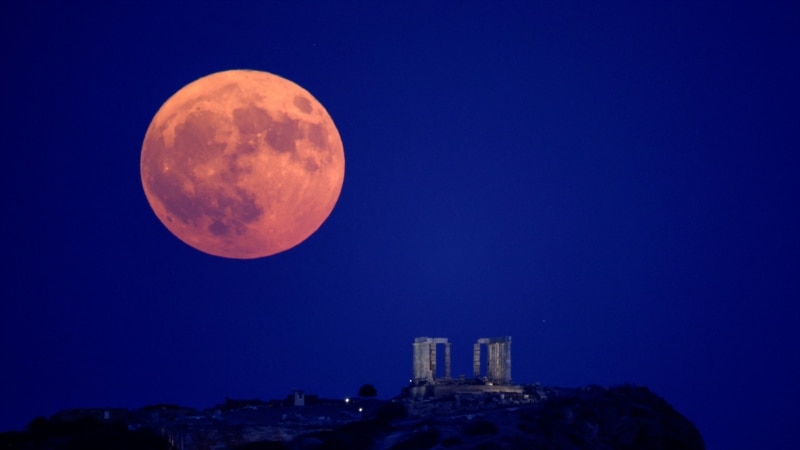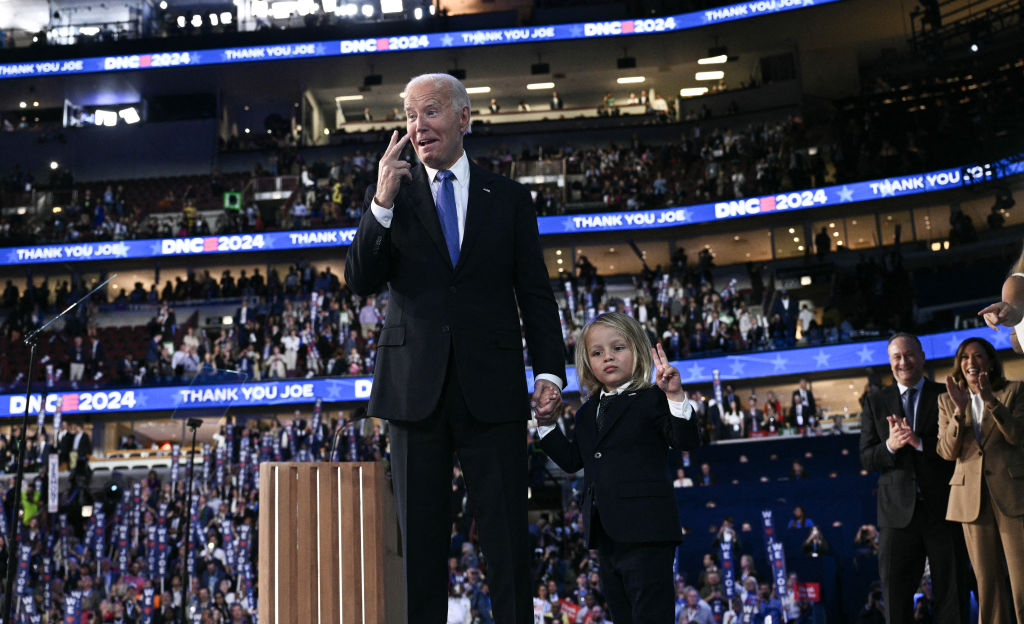
www.theamericanconservative.com
Harris Was Never in Charge of the Border
Politics
Harris Was Never in Charge of the Border
Conservatives are obliged to review Harris’s failures on the border.
Credit: image via Shutterstock
Vice President Kamala Harris was never the “border czar.” If you’ve kept up with the media lately, you might have noticed that the commentariat seems intent on clarifying that. Axios, among others, recently “clarified” their reporting on Harris’ border mismanagement and disavowed their previous use of the “border czar” title. Given Axios’s key role in fostering a DNC coup against a sitting president, we can interpret that Democrats recognize the scope of their failure on the southwestern border and want to distance themselves from the consequences.
The consequences of the Biden-Harris administration’s border policies are well known and well documented. Violence on both sides of the border, record drug overdoses, and strained public institutions have marked a half-decade of utter chaos. The monotony of endless alien crossings and drug seizures obscures the transformational nature of the crisis, rendering the southwest a pot of boiling frogs.
It’s not a shock that the Democrats have decided to distance Harris from her time overseeing aspects of the administration’s border response. But with the Democratic National Convention underway, conservatives are obliged to review Harris’s failures on the border and communicate the consequences of these failures to the electorate.
Harris was tapped to front the Biden administration’s signature border policy, the so-called “root cause” strategy, in March of 2021. She was placed in charge of “leading the administration’s diplomatic efforts to address the root causes of migration from El Salvador, Guatemala, and Honduras.” At the time, Biden emphatically endorsed Harris as the woman for the job, even going as far as deputizing her to negotiate in his name: “When she speaks, she speaks for me. Doesn’t have to check with me. She knows what she’s doing, and I hope we can move this along.”
Despite the Biden White House’s typical bravado, the “root cause” strategy was seemingly a response to the administration being caught with its pants down. The string of controversies and leaks from the White House in the aftermath of the early Biden border announcements stand as evidence of the administration’s dilemma. After a half-decade of demonizing border enforcement as fascism, the Biden White House quickly dismantled the border enforcement framework left to them by the Trump administration in February 2021. Through a myriad of international deals, stepped-up enforcement, and creative use of authority granted to the executive to combat Covid-19, the Trump administration brought illegal migration to record lows in 2020. Dismantling such a carefully crafted framework was sure to have catastrophic consequences, but the White House pressed ahead regardless. The ongoing catastrophe began to unfold within weeks of the administration’s actions.
What explains such acts of wanton destruction? Some of it can be attributed to the brain rot inflicted by misleading reporting, certainly. Democratic voters, lied to for years by the mainstream media, overwhelmingly opposed Trump’s border policies at the beginning of 2021. The media, replete with defamatory lies about Trump-appointed officials, reflected the views of millions of resistance liberals who understand little about the crisis but sermonized about it nonetheless. For left-wing actors with fewer scruples, it was an opportunity to make common cause with an emergent far-left Democratic base and burnish political credentials. Then-Senator Kamala Harris, still a presidential aspirant, fell squarely into this camp. Harris harangued Trump Immigration and Customs Enforcement officials by comparing them to Ku Klux Klan members and called for the abolition of the agency. She continued her cynical assault by introducing a bill to close privately owned migrant processing centers. This was part of a libelous effort to characterize an effort to protect children who have been exploited by traffickers as “child separation.”
Harris is not a naive limousine liberal like her base. She understands the value of law enforcement, as evidenced by her successful career as a prosecutor. Her motives, cynical as they are, are political. Harris, perhaps more than any other politician, understands the political value of vapid platitudes in an age characterized by them. As the Washington Post was forced to admit, Harris’s propensity for empty rhetoric may deliver the White House, but it will not solve the mounting crises Harris must address.
In the immediate aftermath of the administration’s dismantling of coherent law enforcement, a surge of illegal immigrants began crossing the border. Having politically precluded themselves from implementing proven policy, the administration turned to Harris to be the flagbearer for policy selected to feel most satisfactory to progressives. Instead of enforcing the law at the border, Democrats would coordinate a few billion dollars of private investment in Golden Triangle countries where majorities of the migrants were hailing from or traversing through. The strategy is typical of the worldly, self-exalting moralism that has come to define the progressive left. In true bleeding-heart form, Harris would solve all of central America’s problems.
Harris’s left-wing naivete on the border, crucially, can be easily linked to her feigned hostility towards law enforcement. Blaming all social ills on loosely tangible “root causes,” Harris has repeatedly demonstrated that she is prepared to prioritize her base’s ideological shibboleths over the practical outcomes, even deadly outcomes, of implementing law enforcement pullbacks. The consequences have been entirely predictable in both circumstances. Harris’s hometown, San Francisco, has been overwhelmed by waves of looting and spikes in violent crime. The southwest has been overwhelmed by millions of illegal aliens. Should Harris assume the presidency, American citizens can expect this dangerous logic to be extended to all of our security agencies at all levels of government.
It is self-evident that the Biden-Harris administration has failed to contain the crisis at the U.S. border, but has their root cause strategy improved the condition of Golden Triangle countries? The administration has been quick to tout their efforts to bring $5.2 billion dollars in private investment to these countries. A White House press release identified some of the more than 50 companies the administration coordinated with to create thousands of jobs there. Leaving aside the fact that the administration should be coordinating private investment in the United States rather than overseas, $5.2 billion is a relative drop in the bucket. The combined gross domestic products of Golden Triangle countries is $168.4 billion; $5.2 billion in investment, spread across four years, is hardly sufficient to materially change the circumstances of the nearly 40 million people living in the region.
Emigration statistics from these countries bear this claim out. Guatemala, the largest of the Golden Triangle nations, has suffered a dramatic increase in emigration to the United States since 2020. Estimates of Guatemala’s expatriate population living in the United States range from two to three million, roughly representing 14.5 percent of Guatemala’s current population. The nation’s remittances from the U.S., a clear indicator of emigration, increased from $11 billion in 2020 to $19.8 billion in 2023. Remittances, not Harris’ root cause strategy, remain the key drivers of Golden Triangle economies.
What of Honduras? Since 2020, U.S. border authorities have documented 662,470 attempts by Hondurans to illegally cross the border. Interestingly, Honduras’ homicide rate fell 17.3 percent from 2020 to 2023, suggesting that Golden Triangle countries are, in fact, not sending their best.
The man most notable for unloading public liabilities onto the American taxpayer is El Salvador’s President Nayib Bukele. By imprisoning tens of thousands of hardened gang members and forcing the rest to flee to the United States, Bukele has transformed his nation at our expense. El Salvador is now one of the safest nations in the western hemisphere, safer than the United States, and stands as the best-positioned Golden Triangle nation for the future. It is no coincidence that the Biden administration, angered by his focus on law enforcement, sought to diplomatically isolate Bukele. Bukele’s strategy, rooting out criminals rather than causes, has been emphatically vindicated and proves that the Biden administration’s waffling is a matter of will, not ability. This fact, and the dismal relations between Democratic leaders and Bukele, provide yet more evidence of Harris’s failures in the region.
By every measurable benchmark—emigration, diplomacy, counter-trafficking, and remittances —Harris has failed to stabilize either the Golden Triangle or the U.S. southwestern border. As the crisis continues to unfold, Harris and her allies in the media and DNC establishment will undoubtedly try to obscure her role in fostering one of the most significant humanitarian disasters in the hemisphere’s history. But despite the campaign of lies, the media unwittingly revealed an essential truth: Harris was never in charge of the border.
The post Harris Was Never in Charge of the Border appeared first on The American Conservative.
















